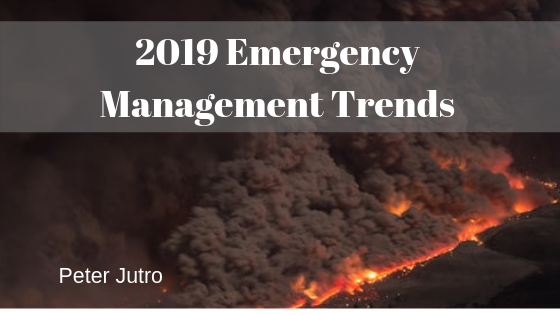Emergency management teams have had their hands full in 2018 and it looks like 2019 might be another year for an increased number and severity of natural disasters. Accordingly, emergency management has become a hot topic in regard to budgets and responsibilities. Regardless, these teams help prepare for natural disasters as well as provide swift response and recovery efforts, but many do not truly understand how emergency management works. There are four phases of emergency management: prevention/mitigation, preparedness, response and recovery. Each phase requires not only participation from emergency management professionals, but also from the public. When the public has taken proactive measures, damage and harm should be minimized. For example, if an area is prone to flooding, a homeowner should have adequate flood insurance. For a fire or tornado, a homeowner can make sure his or her insurance policy is up to date, and ensure that family heirlooms and essential documents are stored in a safe location.
According to FEMA, there were 124 declared federal disasters in 2018. The Insurance Information Institute estimates their cost was $52 billion. With an increase in natural disasters and advancements in technology, it is vital that emergency management stay on top of the latest trends that affect their performance. These are three trends for 2019:
1) An Increase in Risk-Based Planning — Since there is at least one major natural disaster a year, the risk of extensive damage, casualties and/or deaths is a constant worry. This may entail greater effort by a community to protect its assets. It can mean strengthening a weak infrastructure, investing in a new or better emergency communications system, getting better access to resources … etc. When the risks are known, the four phases of emergency management are more effective.
2) Create Public-Private Partnerships — A public-private partnership consists of a collaboration between first responders, businesses, community stakeholders and others to achieve a quick response, provide reliable communication and ensure that key personnel have the tools needed to do their jobs during a crisis. The main goals for the collaboration are to:
- ensure all parts of a community are served
- build community resilience
- enhance strategic planning and pre-identify resources.
3) An Increase in Social Media Use — During natural disasters last year, social media was used as a communication tool by the U.S. government and local agencies. The public used it to communicate their location to fire rescue and police, as well as communicate with loved ones. Although it can be an effective communication tool, increasing dependence on social media could make us even more vulnerable to cyberattacks and outages. Reliable, secure communication systems are critical for emergency management.

